This post may contain affiliate links. Please see our disclosure policy.
Using leftover rice, this easy dak juk (or Korean rice porridge) recipe is a delicious and easy comfort food that takes a fraction of the time than the original version. Think of it as Korean chicken congee!
I still remember very fondly my grandma making me “dak juk” growing up. It has always been one of my favorite comfort food meals that’s so nourishing and warming. If you’ve never heard of “dak juk” before, it’s a thick Korean rice porridge with shredded chicken. It’s very similar to Chinese chicken congee, and it’s really a soup of love.
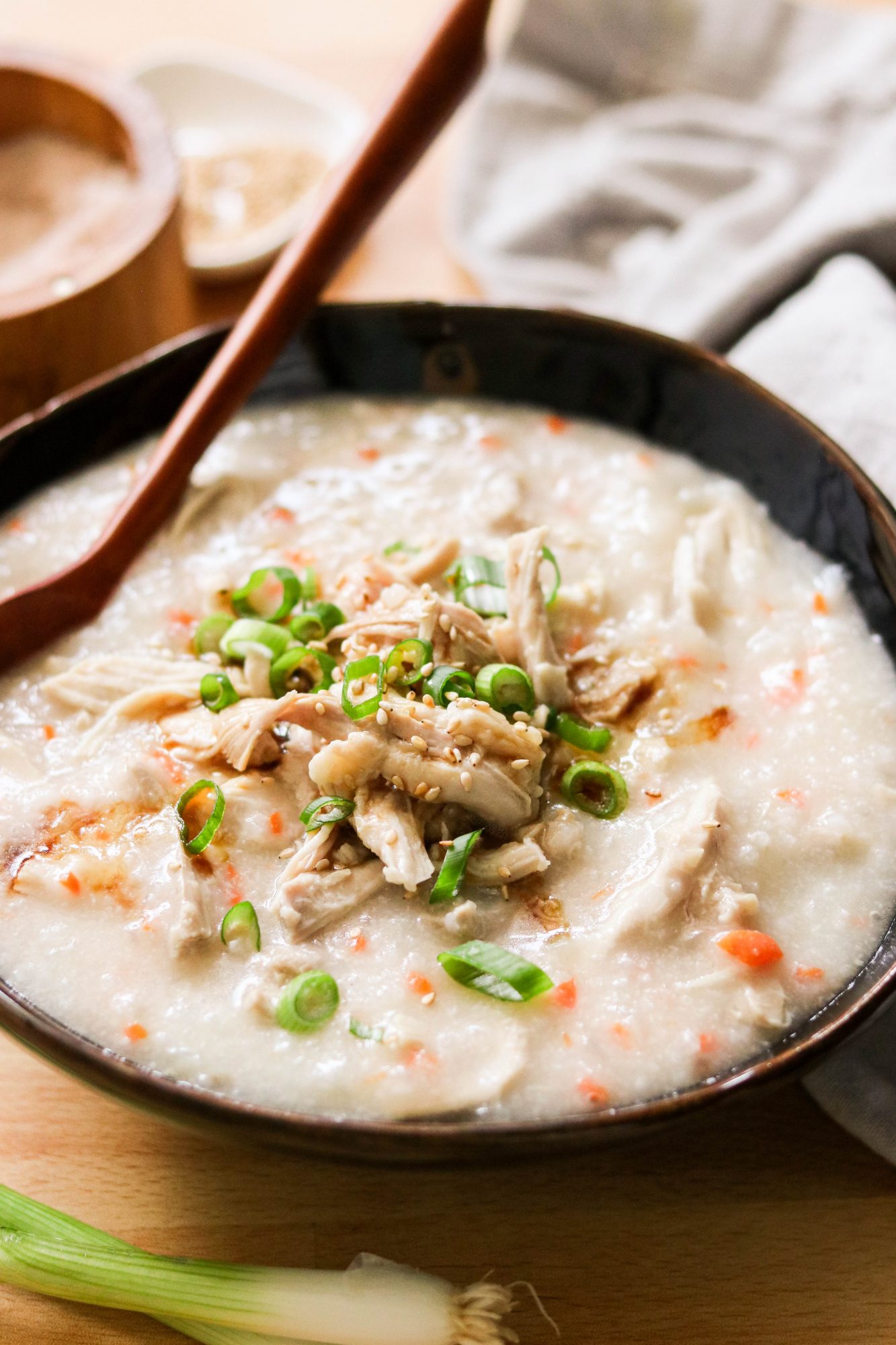
All The Names Of Porridge
Rice porridge (Juk in Korean) is an exceptionally popular dish across Asian countries. Every culture has its own version of this dish. It is a comforting, filling, and cost-effective way to feed large families. Historically, it was considered a dish that fed the poor, but today it is a beloved dish that families everywhere enjoy.
In Korean, we refer to the chicken version as Dak Juk. “Dak” means chicken, and “juk” means porridge, translated as Chicken Porridge. In other countries, rice porridge is referred to as congee, jook, chao ga, okayu, chok, lugaw, and so many others! Many add chicken, mushrooms, or shrimp, and some serve it plain. There are so many ways to enjoy rice porridge.
I love foods that unite cultures, and this rice porridge is definitely a common thread among Asian families everywhere!

What Makes This Recipe Great
Traditionally, dishes like Dak Juk and Chicken Congee take hours to make. My version uses leftover rice to make this an easy, 30-minute recipe!
I actually created this recipe after getting Asian takeout too many times a week and was trying to figure out how to use all the leftover rice that came with the meals.
Now, Dak Juk has become one of my favorite easy leftover rice recipes. It comes together in no time and it’s just so delicious. Even my toddler loves this meal!
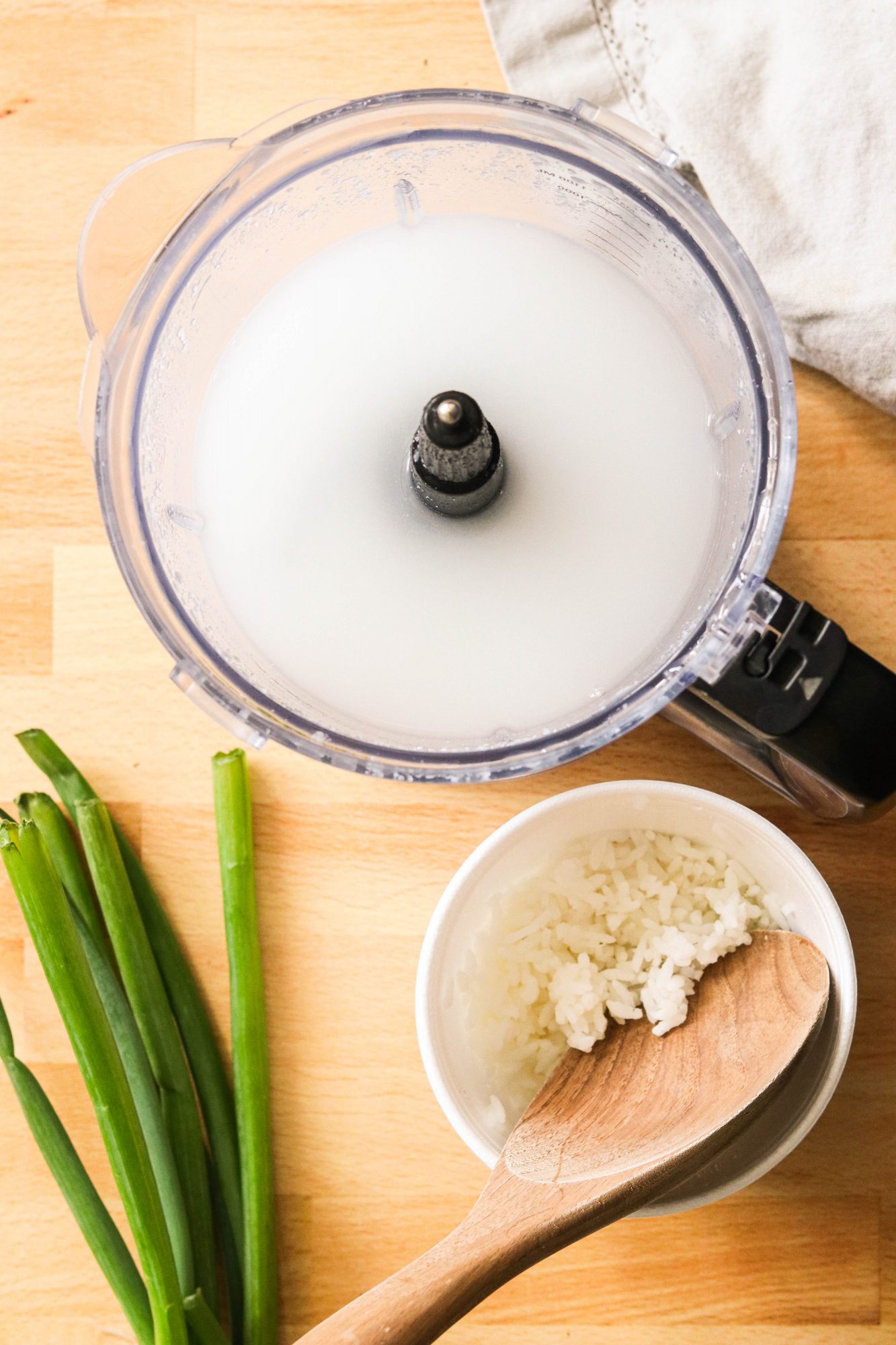
Ingredients Notes
This quick and easy dak juk/chicken congee’s components are simple and budget-friendly. There are just 7 main ingredients.
- Leftover cooked rice: Jasmine or sushi rice are great for this Korean rice porridge. Sweet sticky rice will work well too!
- Water: You can also use bone broth for added nutrition, or chicken broth for more flavor. I usually keep it simple by using just water.
- Chicken thighs: I like to use boneless, skinless chicken thighs. You can use breasts as well but may need to cut them into smaller pieces to get them to cook through in time.
- Sesame oil: You can use another cooking oil of your choice, but sesame oil gives such a wonderful flavor to the dish.
- Fresh Veggies: Garlic cloves, onion, and carrot.
How to Make Korean Rice Porridge with Chicken (Dak Juk)
All it takes is 30 minutes to cook up this amazing and comforting chicken congee recipe. Here’s how to make Korean rice porridge using leftover rice:
Step-by-Step Instructions
- Blend rice and cups of water together until the mixture is cloudy and the rice is broken up into tiny pieces.
- Halve each chicken thigh. This helps the meat to cook faster.
- Heat oil in a saucepan and sauté garlic, onion, and carrot together until softened.
- Add the rice mixture and chicken to the pot and let it come to a boil. Reduce the heat to low and simmer together until the chicken is cooked through and the porridge is thick in consistency.
- Turn off the heat, then remove the chicken from the pot to shred. Add 1/2 of the chicken back into the porridge and stir together.
- Serve, topped with the other half of the chicken.

Expert Tips
- I know some like to drizzle sesame oil on top of the porridge, but I find that this is unnecessary when you cook everything in sesame oil. The flavor of sesame really shines through!
- You may have noticed that this Korean chicken congee doesn’t use any salt or seasoning during the cooking process. That’s because these are added in after it’s served, to taste.
- Use any leftover rice you have. Leftover jasmine rice, sushi rice, or even sweet sticky rice work very well.
Serving Tips
Here are some of the things I like to serve my Dak Juk with:
- Sea salt
- Coconut aminos (or soy sauce or tamari sauce)
- Chopped green onions
- Sesame seeds
Storage Tips
- Store leftovers in an airtight container in the refrigerator for up to 5 days. Reheat in the microwave or stovetop and add a bit more water if necessary to thin out the porridge. Serve warm with your favorite toppings.
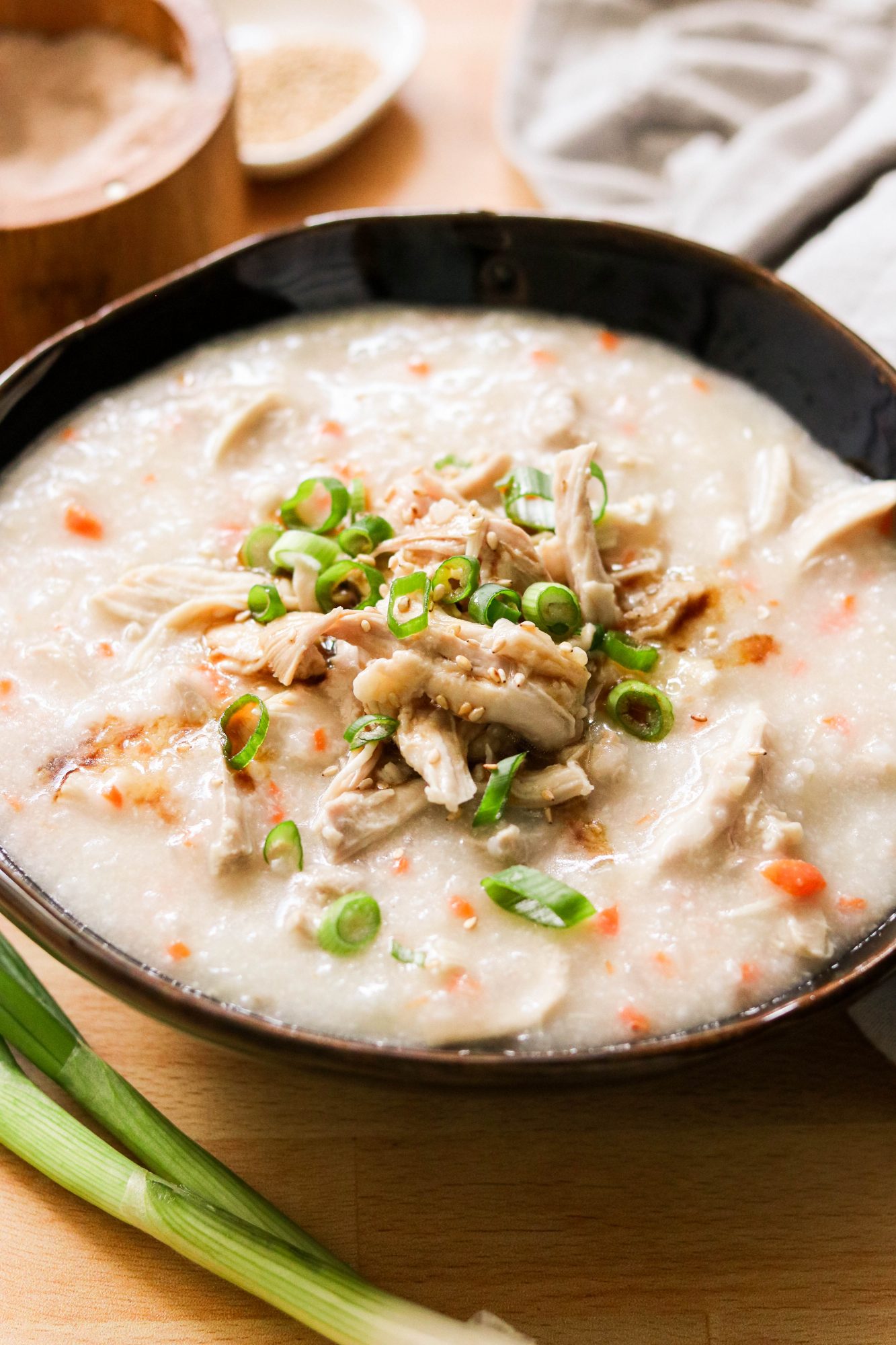
Recipe FAQs
These are pretty much the same dish, just named differently. Chicken congee is the Chinese version of Dak Juk, and Dak Juk is the Korean version of chicken congee.
Yes! It’s a very nourishing dish and has tons of gut health benefits.
Try These Delicious Korean Recipes…
Kkakdugi – Korean Radish Kimchi (Paleo, Whole30, Keto, Vegan Option)
Kimchi Braised Keto & Whole30 Pork Ribs (Dweji Galbi Kimchi Jjim) – Stove Top & Instant Pot Method!
Paleo & Whole30 Korean Steak Bites – Stovetop or Air Fryer (AIP Option)
Instant Pot Chicken Soup (Paleo, Whole30, AIP, Keto)
Paleo & Whole30 Korean Sloppy Joes (Instant Pot or Stovetop)
I hope you enjoy one of my favorite easy leftover rice recipes. Whatever you call it, Dak Juk, Chicken Congee, Korean Rice Porridge with Chicken, or any other name, I hope you feel the love in this dish like I do! Please leave a star rating and a comment below if you make it, and follow me on Instagram for more delicious recipes!

30-Minute Dak Juk | Korean Rice Porridge with Chicken
Video
Ingredients
- 1 cup leftover cooked white rice, jasmine, sushi, or sticky rice
- 2 cups water, or bone broth or chicken broth
- 2 boneless, skinless chicken thighs, about ½-¾ pound
- 1 tbsp sesame oil
- 3 garlic cloves, minced
- 1/4 cup onion, finely minced
- 1 small carrot, finely minced
To serve:
- Sea salt
- Coconut aminos, or tamari or soy sauce
- Chopped green onions
- Sesame seeds
Instructions
- Place leftover rice and water in a blender or food processor, blend until the water is cloudy and the rice is broken up into tiny pieces.1 cup leftover cooked white rice, 2 cups water
- Cut each chicken thigh in half.2 boneless, skinless chicken thighs
- Heat sesame oil in a saucepan over medium high heat. Add garlic, onion, and carrot, and sauté until fragrant and tender, about 4-5 minutes.1 tbsp sesame oil, 3 garlic cloves, 1/4 cup onion, 1 small carrot
- Add blended rice water and chicken, and let it come to a boil. Stir then cover, and reduce the heat to medium low and simmer for 5 minutes. Uncover and simmer for 5-10 minutes while stirring frequently, until the chicken is cooked through and the porridge reaches your desired consistency. If it gets too thick, you can add some water to thin it out.
- Turn off heat. Remove the chicken from the pot and shred. Add 1/2 of the chicken back to the porridge and stir together.
- Divide into 2 bowls and top with the other 1/2 of shredded chicken. Serve with salt, coconut aminos, green onions, and sesame seeds, and garnish and season as desired.Sea salt, Coconut aminos, Chopped green onions, Sesame seeds
Notes
- I know some like to drizzle sesame oil on top of the porridge, but I find that this is unnecessary when you cook everything in sesame oil. The flavor of sesame really shines through!
- You may have noticed that this Korean chicken congee doesn’t use any salt or seasoning during the cooking process. That’s because these are added in after it’s served, to taste.
- Use any leftover rice you have. Leftover jasmine rice, sushi rice, or even sweet sticky rice work very well.
- Sea salt
- Coconut aminos (or soy sauce or tamari sauce)
- Chopped green onions
- Sesame seeds
- Store leftovers in an airtight container in the refrigerator for up to 5 days. Reheat in the microwave or stovetop and add a bit more water if necessary to thin out the porridge. Serve warm with your favorite toppings.
Nutrition
Nutrition information is automatically calculated, so should only be used as an approximation.
Regarding other affiliate links and affiliate relationships: In order for me to support my blogging activities, I may receive monetary compensation or other types of remuneration for my endorsement, recommendation, testimonial and/or link to any products or services from this blog. Thank you for your support and understanding.



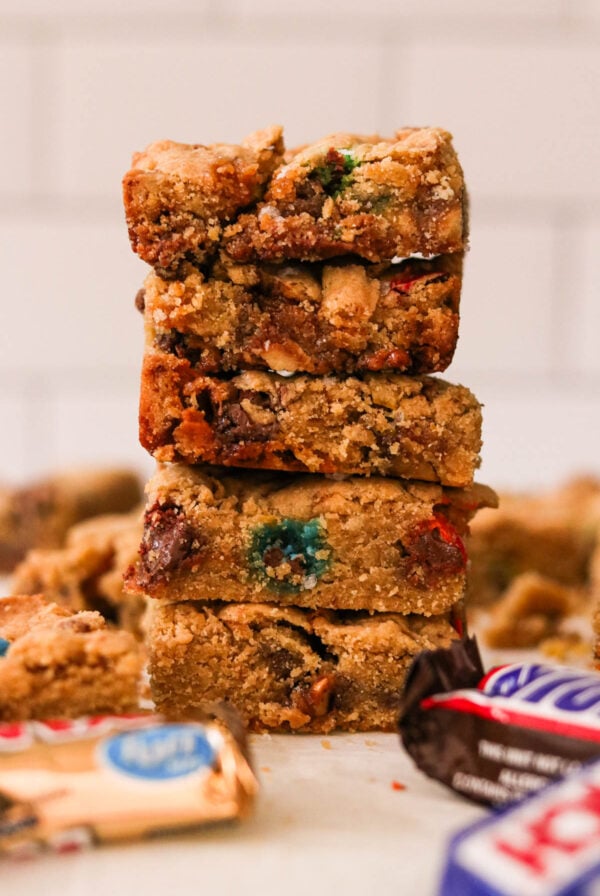
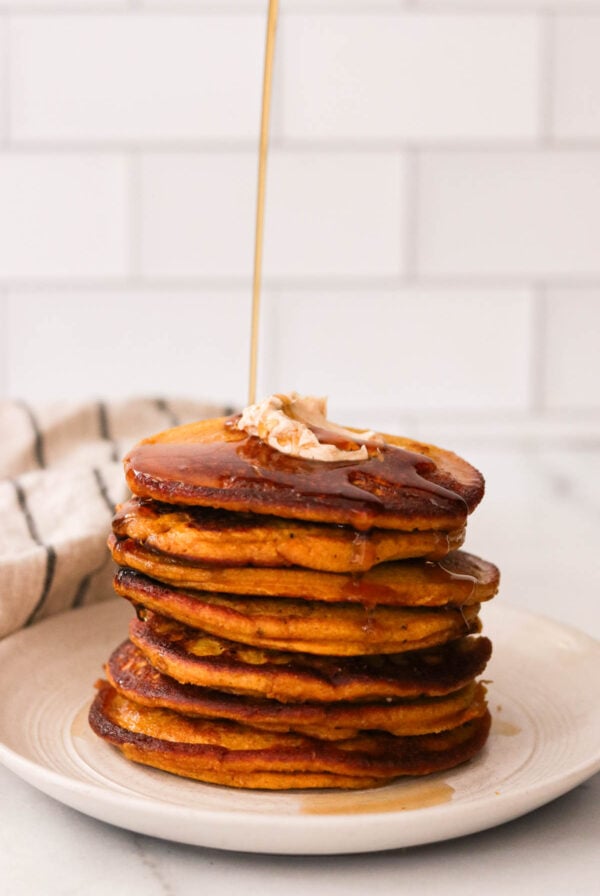
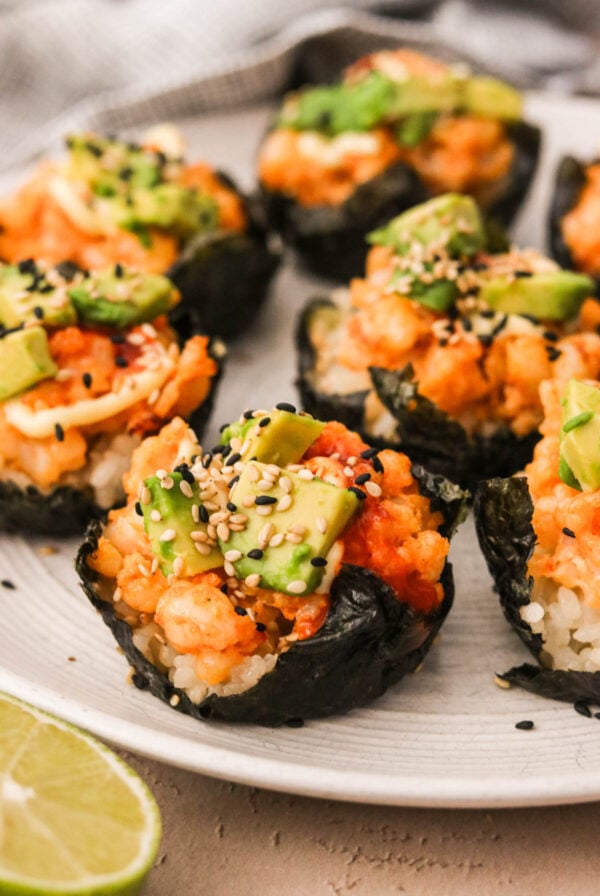
I came across this recipe as I was walking into my kitchen trying to decide what to make for dinner. Thankfully I had all of the ingredients.
My family (husband and three kids) and I enjoyed this so much! Easy to make and great for the whole family.
A wonderful family breakfast today using leftover jasmine rice! Pure genius putting the leftover rice in the blender with water. Also thank you for making the suggestion of seasoning with coconut aminos.
So glad you enjoyed it!!